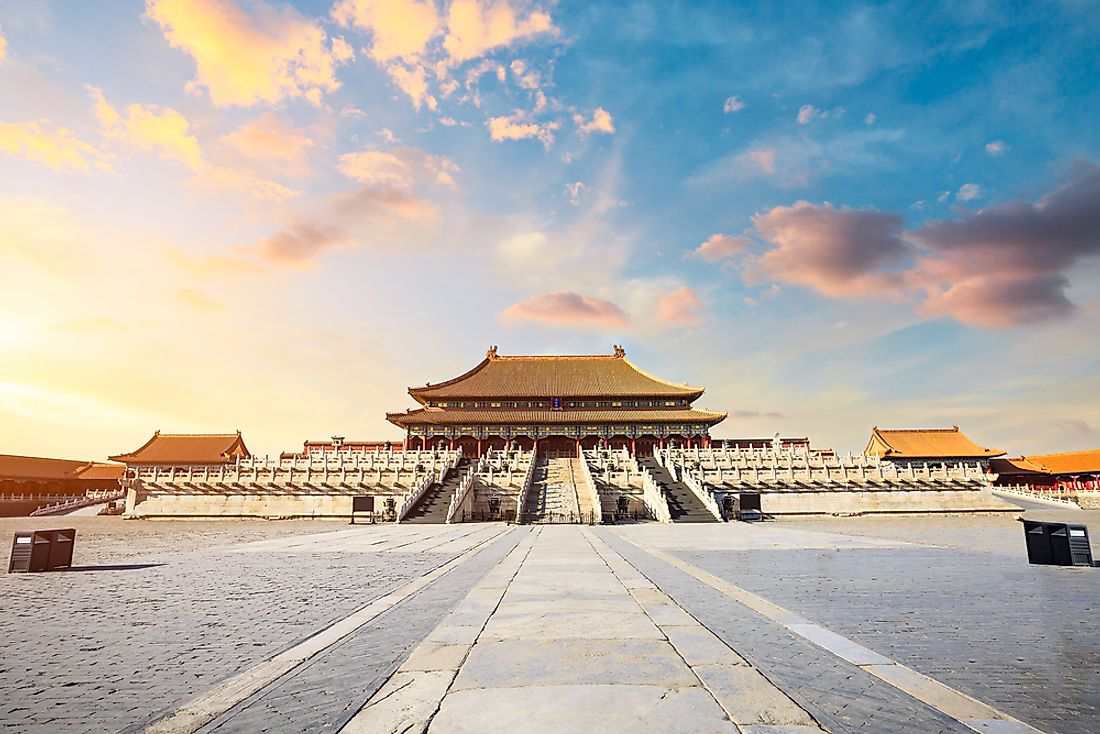The Forbidden City Of China

A UNESCO World Heritage Site in Beijing, China, the Forbidden City was the seat of Chinese imperial power over a span of five centuries. Yongle, a great ruler of the Chinese Ming Dynasty, commissioned the construction of the Forbidden City in 1406 and the royal court within the city started operating in 1420. The name of the city derives from the fact that the entry to the city was completely barred for the subjects of the kingdom. Even royal ministers and members of the royal family were allowed restricted entry into the various parts of the Forbidden City. Only the emperor enjoyed the sole right to enter the city and access its every area at his own will. The Palace Museum inside the Forbidden City is the most visited museum in the world.
4. Tourism
The Forbidden City is one of the chief historical and cultural attractions of China. Being located in the heart of the capital city of the country itself, the Forbidden City is easily accessible by tourists. Every year, nearly 14 million visitors tour the Forbidden City, marveling at its spectacular architecture and rich history. In 2010, during the National Day break, over 122,000 people, more than twice its capacity of 60,000 people, toured the destination.
3. History and Uniqueness
It took over 14 years and more than a million workers to complete the construction of the Forbidden City. The city served as the seat of the Chinese Ming Dynasty between 1420 and 1644 witnessing the rule of 14 emperors of the dynasty. In 1644, the city was captured by the rebel forces of Li Zicheng for a short period of time when the forces of Wu Sangui and those of the Manchu together defeated Li Zicheng, forcing him to flee the city. From then on, the Forbidden City became the powerhouse of the Qing Dynasty until 1860 when the Anglo-French forces occupied the city up to the end of the Second Opium War. The city once more came under the control of the Qing Dynasty until 1912 when the last Emperor of China, Puyi, was abdicated and the Forbidden City became state property. Today, the Forbidden City hosts one of the largest museums in the world, storing artifacts belonging to the Ming and Qing dynasties. Over 1 million artifacts stored here are regarded as Chinese National Heritage items.
2. Architecture
A 52-meter wide moat and 10-meter high walls form the protective boundary around the Forbidden City. Four entrance gates exist at each of its four walls. Inside, the city is divided into two primary sections, the Outer Court where the emperor held court and the Inner Court, where the emperor and his family resided. Philosophical and religious principles and imperial power is reflected in the constructions at the Forbidden City. Colors have been chosen very carefully here with yellow, the symbol of royalty, used as the dominant color in the roofs of all buildings in the city. The main halls of both the Inner and Outer Courts are arranged in groups of three and the residences in groups of six, as per the ancient Chinese cosmological principles. Other decorations and layouts of buildings strictly adhere to the Classic of Rights. A rare collection of ancient Chinese ceramics, paintings, jades, timepieces, bronzen ware, and other artifacts also glorify the precious collections of the Forbidden City.
1. Threats and Conservation
The Forbidden City in Beijing, though a major tourist destination, is not devoid of threats. The high levels of pollution in Beijing with toxic gases loaded in its air is threatening the integrity of the age-old structures of the Forbidden City. The soot from automobile exhausts and coal-fed industrial units in and around the city is depositing carbon on the facades of the buildings of this historical complex. The acid rain generated from industrial and automobile emissions are also eroding the carvings and designs on the facades of the buildings of the historical complex. The need for more space to accommodate the booming population is also threatening the Forbidden City.







